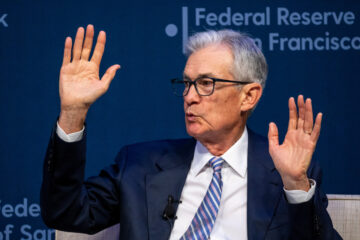The firm recently unveiled a vast restructuring plan including the elimination of 9,000 jobs by 2025.
Doubt still hangs over Credit Suisse like a shadow that is difficult to shake off.
The 166-year old bank unveiled a vast, long-awaited restructuring plan on October 27.
This revamp, considered an emergency plan to dissipate uncertainties about its future, had three pillars.
The first is a drastic cost reduction. The firm wants to cut 9,000 jobs by 2025, including just over 2,700, or 5% of the workforce, by December 31. Overall, Credit Suisse wants to reduce its cost base by 14.5 billion Swiss francs in three years.
The use of consultants and contractors is also going to be drastically reduced.
The second pillar is the break up of the investment bank into three parts. The investment bank was once the company’s cash cow but a series of scandals have cost Credit Suisse (CSGKF) several billion dollars in losses and fines imposed by regulators.
Skepticism
The firm will form a Markets unit, to provide financial services and products to the clients of the wealth management division and to institutional investors.
The bank is also resurrecting Credit Suisse First Boston, a U.S. firm formed after the acquisition of First Boston decades ago, to compete with Goldman Sachs and other investment banks in the United States. Credit Suisse First Boston is set to become independent over time. The unit will do everything an investment bank is supposed to do.
Credit Suisse will also create a unit in which the firm will transfer all its non-strategic assets with the aim of winding them down to reduce costs and the use of capital.
The third and last pillar is a capital increase of 4 billion Swiss francs ($4.04 billion) by issuing new shares, which will be used to finance the plan. Saudi National Bank, a state-controlled firm, has committed to invest up to 1.9 billion Swiss francs in exchange for a 9.9% stake.
While Credit Suisse has also announced the sale of a “significant portion” of its Securitized Products Group (SPG) business, the question investors are asking is how the bank will execute this plan under the current macroeconomic conditions.
There is the Russia-Ukraine war which has caused an energy crisis in Europe, and inflation at its highest in 40 years, which is creating volatility in the markets and is raising fears of a global recession.
The skepticism remains. Since the announcements, the Credit Suisse share price has struggled. The stock has fallen 13.2%. The market valuation is now only 10.8 billion Swiss francs, which exposes the bank to a possible takeover.
No ‘Takeover Discussions’
It is, therefore, no surprise that speculations are circulating, making the bank an ideal target for a merger & acquisition transaction.
But the bank has just sent a clear message to the markets: it is not for sale.
“We are going to thrive again, so we don’t have any takeover discussions,” Credit Suisse Chairman Axel Lehmann told Bloomberg Television on October 31. “We want to stay independent.”
“Going forward, Credit Suisse is really a wealth management-centric franchise, centered around entrepreneurs, wealthy clients,” added Lehmann.
He also said that the bank plans to push ahead with growth efforts in key Latin America, Asia Pacific and Middle East markets.
“We are a wealth manager, and asset management goes alongside.”
Lehmann also defended the bank’s decision to ask the Saudis for help.
“We are very happy that we have an investor like the Saudi National Bank (SNB). It’s a private institution, and I think this is also a region that is growing,” he said.
It is not certain that Lehman’s remarks will make the rumors disappear. The new restructuring plan is Credit Suisse’s second in a year, which somewhat calls the credibility of its leadership into question.
Less than a year ago, former Chairman Antonio Horta-Osorio tried to reboot the machine by abandoning the hedge-fund activities at the heart of the Archegos scandal, and by redirecting about $3 billion of capital from the investment bank to the private bank.
But markets and analysts felt he hadn’t gotten far, despite his reputation as a bank savior. Horta-Osorio had notably turned around the British bank Lloyds Banking Group.
Lehmann and new CEO, Ulrich Körner, are trying to do what he couldn’t: convince investors that this time around it’s the right plan. This is what Lehmann seems to be doing, whose words sound more like an after-sales service.


